Sizes and Descriptions
by Phil Bergman
Description of Article
This article helps explain the different pot (container) sizes that we use at our nursery in Encinitas, California. They are different than what nurseries use on the East Coast or different areas outside of California. Pictures of the various container sizes are given below.
Introduction
Over the years I’ve found that many customers, especially mail order clients, are confused by the size of containers used by nurseries. Rather than refer to them by inch diameter, out here we use the “gallon” sizes. Unfortunately, it’s not quite the same as applying “the gallon of milk” formulae, but it’s what’s been in place for half a century. I am not going to comment on the history of this container system. Rather, I’ll just show examples as it is the standard of the trade in these parts.
PLANT CONTAINER SIZE
For growers here on the West Coast, there are black plastic containers that most of us use on our plants. Surprisingly, there are differences between the pots used on the West Coast and East Coast of the U.S. Here we refer to most containers by “gallon size” On the East Coast pots are referred to by “diameter in inches”. So, back East you might find a plant in a “14 inch pot”. Here is might be called a “15 gallon pot”. If you visit our price and availability catalog, plants are shown by their pot size. I’m hoping that this Blog post this morning will help clarify what individual pots look like.
CONTAINER SIZE
PHOTO EMPTY CONTAINER
PHOTO OF PLANTS IN
THIS CONTAINER
BAND SIZE CONTAINER
This pot is 3 x 3 x 9 inches, square in shape. It is used for seedling plants. For most growers, it has replaced the one gallon pot. It is a bit deeper and easier to place in carrying trays. It also conserves space on benches because these can be placed close together. You can get a pretty nice plant in a band container, sometimes up to 30 inches tall.
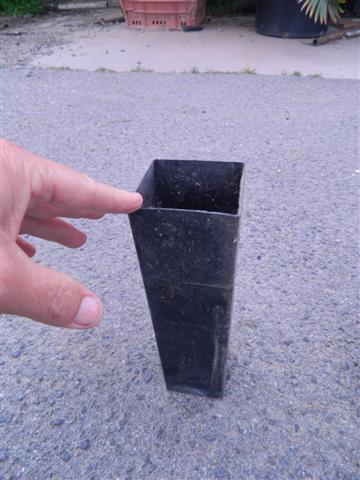
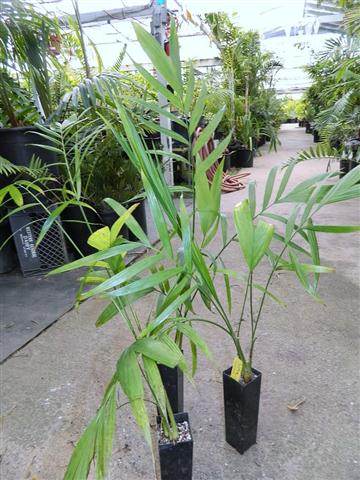
ONE GALLON POT
This is a very common pot used, especially by flower growers and those producing small shrubs. It’s a typical first step after germinating a seedling. We prefer using the band containers above as they conserve table and bench space more efficiently and are deeper. Diameter of this pot is six inches but it’s only about seven inches deep.
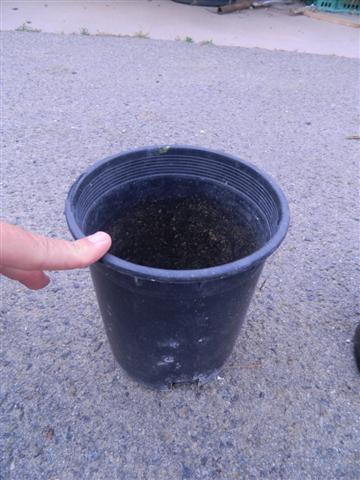
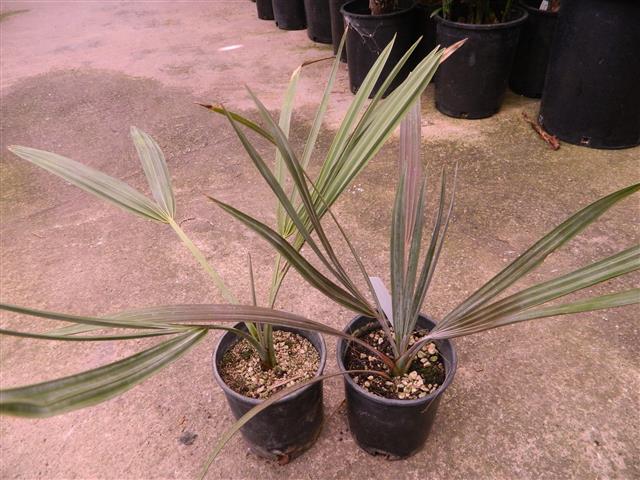
TWO GALLON POT
This pot is 7 to 8 inches wide and about 8 inches deep. It is a nice size to move a band plant into. But, it is not particularly deep, so you have to make sure the roots fit into the container. This pot will produce an average plant that is about 2 feet tall. We grow a lot of palms in these pots.
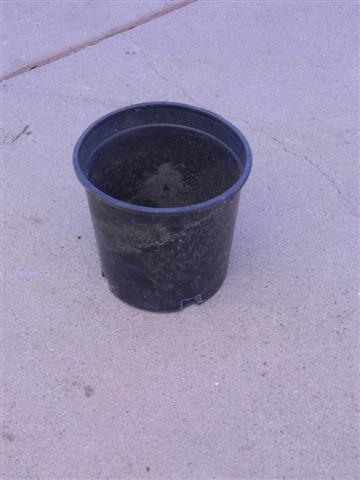
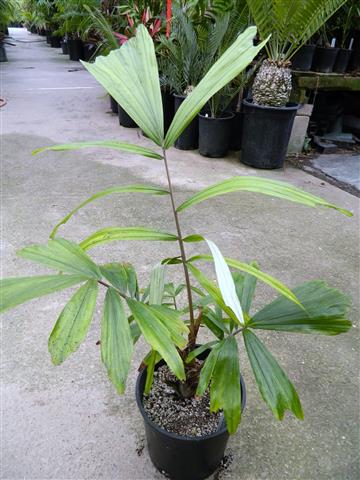
FIVE GALLON POT
This pot is 10 inches wide and about 10 inches deep. It produces a plant that is one of the most common sized palms that we sell. It is popular because it’s not too heavy to lift and plants are typically three to five feet tall, depending on the species.
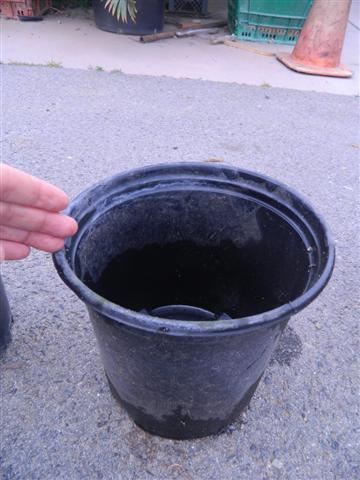

SEVEN GALLON POT
We really like this container because it produces a good sized plant but isn’t as heavy to carry as a 15g. But, for some manufacturing reason, this pot costs twice as much as a 15g. Therefore, most growers aren’t buying this sized pot very much nowadays. It is 12 inches wide, and about 12 inches deep.
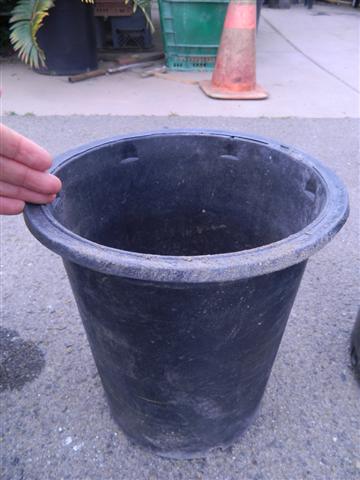
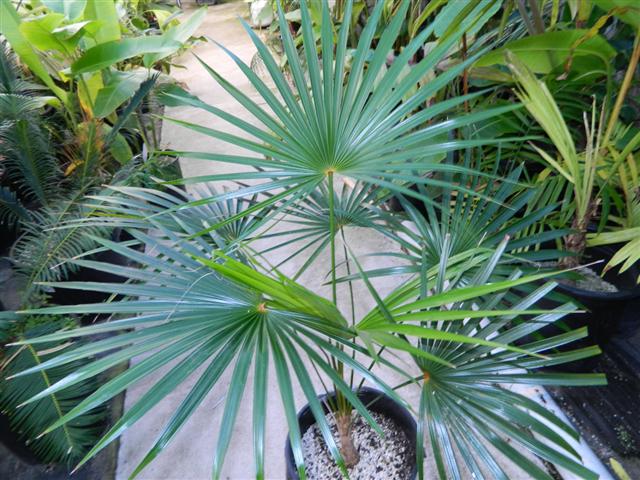
TWENTY/TWENTY-FIVE GALLON POTS
This is the next size up from a 15g. These pots are typically about 18 to 20 inches wide and 16 to 18 inches deep. They weight anywhere from 125 to 150 pounds with their soil. They can produce a plant larger than the 15g, typically 8 to 10 feet. They usually have a flat lip on the top as shown. The pot shown here is actually a 25g pot. 20 g are a bit smaller.

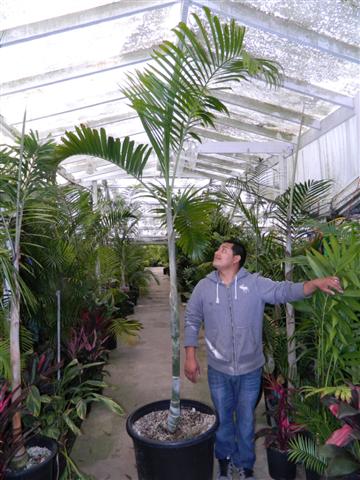
24 INCH BOX CONTAINER
This box is 24 inches wide, square in shape and about 22 to 24 inches deep. The planted weight of this container depends on the mix, but is anywhere from 175 to 300 pounds (this heavier weight is if one is using a very heavy soil). It takes two men to lift one of these. We prefer plastic boxes as shown here, but they are much more expensive than wooden box. The plastic pots last a very long time.
On occasion we also utilize 30 and 36 inch boxes. I’m not showing these here and are difficult or near impossible for men to lift.
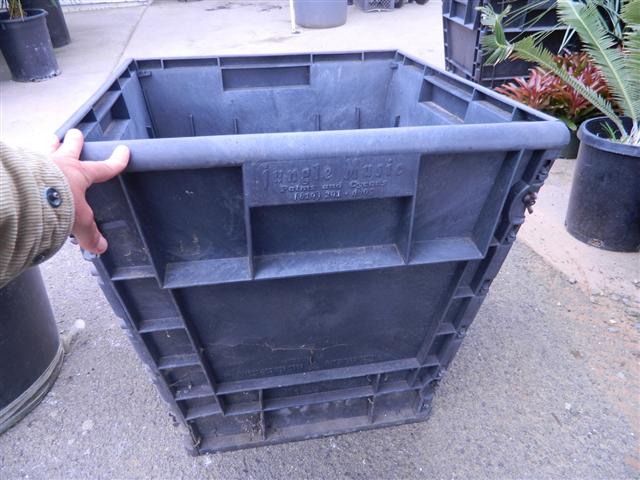
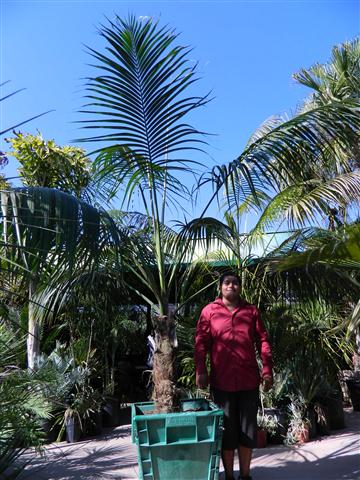
ALL POT SIZES IN A ROW
This pot shows all the sizes lined up in a row. In order, left to right are:
- band size
- one gallon
- two gallon
- five gallon
- seven gallon
- fifteen gallon
- 25 gallon
- 24 inch box
There are a few more pots that we use and I haven’t discussed here. These include:
- Citrus pots: these are 8 x 8 x 14 inches, a tall pot for the diameter and good for cycads
- Deep bands: These bands are about twice the size of a normal band
- Thirty gallon pots: These are a step up from the 25 gallon size and pretty heavy
- Thirty inch boxes: These are very heavy, hard to lift, so we rarely use them
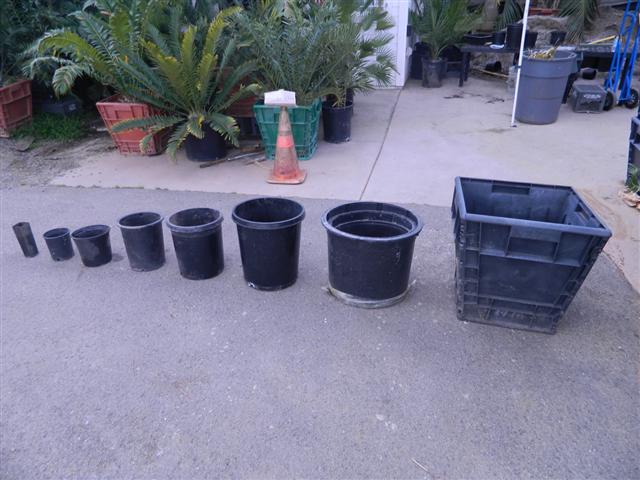
CONCLUSION
On the West Coast of the U.S., the standard nomenclature used for container size is by the “gallon” standard as shown above. We do utilize “inches” on boxes and there are a few random containers, but for the most part size in gallons is utilized. With East Coast nurseries, containers are described typically in inches of diameter. If we were to import a containerized plant from the East Coast, we would typically call it by inches as those containers do not resemble those out west. Interestingly, they are not the same containers with different names but two totally different manufactured lines of pots. I hope this helps clarify container sizes that not only we use on the West Coast, but basically all nurseries use as their container sizes.
REMEMBER: JUNGLE MUSIC GIVES A NURSERY CREDIT FOR RECYCLED PLASTIC POTS
- PALM TREES, CYCADS & TROPICAL PLANT BLOG - October 1, 2020
- TRACHYCARPUS
The Windmill Palm - September 30, 2020 - FAN PALMS –
PALMS WITH CIRCULAR LEAVES - September 29, 2020











